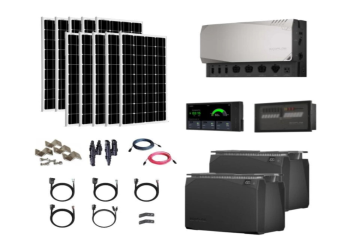Creating a home recording studio is a dream for many musicians and audio enthusiasts. It’s a space where creativity flows freely and where ideas transform into music. Whether you’re a budding musician or a seasoned producer, setting up an efficient and functional home recording studio requires careful planning and attention to detail.
This guide provides essential tips to help you build the ultimate home recording studio. It will also talk about the importance of selecting a powerful laptop for running Ableton and other DAWs.
Choosing the Right Space
The first step in setting up a home recording studio is choosing the right space. Ideally, select a room that is quiet and free from external noise. Basements and attics often make excellent choices because they are isolated from the main living areas of the house. Ensure the room has enough space to accommodate your equipment and allow for comfortable movement.
Acoustic Treatment
One of the most critical aspects of a home recording studio is acoustic treatment. Good acoustics can significantly impact the quality of your recordings. Consider using acoustic panels, bass traps, and diffusers to control sound reflections and reduce unwanted noise. Positioning these elements correctly can help create a balanced listening environment, which is essential for mixing and mastering.
Essential Equipment
Investing in the right equipment is crucial for a successful home recording studio. Here are some key pieces of equipment you will need:
Audio Interface
An audio interface is a bridge between your instruments/microphones and your computer. It converts analog signals into digital format, allowing your computer to process and record the sound. Look for an audio interface with multiple inputs and outputs to accommodate various recording needs.
Microphones
Quality microphones are essential for capturing vocals and instruments accurately. Consider having a variety of microphones, such as condenser microphones for vocals and acoustic instruments, and dynamic microphones for drums and amplifiers.
Studio Monitors
Studio monitors are designed to provide a flat frequency response, ensuring you hear your recordings accurately. Invest in a good pair of studio monitors to make precise mixing decisions.
Headphones
Closed-back headphones are ideal for recording, as they prevent sound leakage, while open-back headphones are great for mixing due to their natural sound.
Powerful Laptops for Running DAWs
A powerful laptop for running Ableton and other DAWs is a cornerstone of a home recording studio. Here’s why selecting a powerful laptop is essential:
Processing Power
DAWs require significant processing power to handle multiple tracks, effects, and plugins simultaneously. A laptop with a high-performance processor, such as Intel Core i7 or i9, ensures smooth operation and reduces the risk of crashes during complex sessions.
RAM and Storage
Sufficient RAM (at least 16GB) is crucial for running DAWs efficiently. It allows the software to handle large audio files and multiple processes without slowing down. Additionally, opting for an SSD (Solid State Drive) rather than a traditional HDD (Hard Disk Drive) provides faster data access and improves overall system performance.
Portability and Convenience
A laptop offers the convenience of portability, allowing you to take your studio on the go. Whether collaborating with other musicians or working in different environments, a powerful laptop ensures you have your studio at your fingertips.
Setting Up Your Workspace
A well-organized workspace enhances productivity and creativity. Here are some tips for setting up your recording studio:
Desk and Ergonomics
Invest in a sturdy desk that can accommodate your equipment, including your laptop, audio interface, and monitors. Ensure your workspace is ergonomically designed to prevent strain during long recording sessions. An adjustable chair and monitor stands can make a significant difference.
Cable Management
Keep your studio neat and clutter-free by organizing your cables. Use cable ties and cable management systems to avoid tangled wires. Proper cable management not only looks professional but also prevents potential hazards.
Lighting
Good lighting is essential for creating a comfortable working environment. Natural light is ideal, but if that’s not possible, invest in adjustable LED lights that provide adequate illumination without causing glare on your screens.
Backup and Data Management
Regular backups are crucial to protect your work. Use external hard drives and cloud storage to save your projects. Implement a consistent backup routine to prevent data loss in case of hardware failure.
Building the ultimate home recording studio is a rewarding endeavor that combines creativity with technical know-how. Using the above strategies, you can create a studio that meets your recording needs. Remember to focus on acoustics, ergonomics, and proper organization to enhance your workflow and unleash your musical potential. With dedication and the right setup, your home recording studio can become the birthplace of incredible music.




